Cider with rosé can again toast success in '09: Despite hikes in VAT as well as heavy promotional activity, beer and wine sales did well and cider was a star, up 16.4%
Punitive tax hikes and deep, deep promotions. It doesn’t sound like the recipe for a good year in the off-trade. And with casualties on the retail, wholesale and manufacturing sides, it wasn’t. But nor was it the disaster some feared, with beer, wine and spirit sales aided by a shift to home-based entertaining.
Cider was once again a law unto itself: with volumes up 12.7% the continuing surge in sales reflects a long-term shift in consumer drinking patterns. But cider has also benefited from deeper focus on the category in the off-trade, says Shaun Heyes, head of customer marketing at Heineken UK. “Supermarkets have significantly increased macro space for cider over the past year and suppliers have invested in their brands and been innovative with packaging and design.”
Heineken’s Strongbow was the star of the show once again, growing sales by more than £40m (or 21.9%) to £224.8m, with the aid of a memorable ad campaign (see p43). But sister brand Bulmers Pear Cider was another strong performer. Own-label cider sales also stood out, the 25.6% growth the result of “an increase in quality while retaining value-for-money status”, says own-label supplier Aston Manor.
And what of Magners? It was the Irish C&C brand that kickstarted the category’s transformation, but for the second year sales fell away as it struggled to overcome a combination of supply chain and exchange rate issues. This month’s acquisition of Gaymer Cider Company is expected to ease some of these issues, while also offering portfolio support in the form of new stablemates Gaymer’s, Blackthorn and Olde English.
With near-ubiquitous 3-for-£10 wine offers this year, wine volumes also grew, up 2.8%, and participating brands witnessed some spectacular gains. Sales of First Cape were up by £50.5m and Blossom Hill added £29.5m.
The challenge, in this environment, was making a profit on those sales. A £36.3m decline in sales at Gallo was the result of a rationalisation programme to axe “less profitable” SKUs.
Market leader Blossom Hill also invested substantial sums in marketing, including sponsorship of Wimbledon and a £2m TV campaign. However, with four American rosés, including the leading White Zinfandel brand, to its name, pink wine has been critical for success. “Consumers are drinking rosé throughout the year,” says brand director Helen Fletcher.
In the spirits category, volume gains were a modest 1.9%, but there was nothing modest about the £38.1m gains of Bell’s Original whisky. And Diageo also enjoyed further success with new flavoured vodka launches in its Smirnoff range.
Even the ale and stout category was static, with Old Speckled Hen enjoying notable success on the back of its memorable TV and print ad creative.
It was only in lager that the off-trade experienced a volume decline – down 1.4 million litres. “That was caused by increases in duty, and price increases from suppliers,” says Steve Howarth, beer, cider and spirits buyer for Spar. “The price points so key to lager have become more difficult to deliver.”
Stella Artois remains market leader, and new sister brand Stella 4% increased sales by £53m to enter the top 10. AB InBev president Stuart MacFarlane believes the decision to launch the lower-strength variant via the off-trade is the way forward for brewers. “Historically, you had to build brands using pub culture. Now the industry needs to think about tailoring launches to the take-home market.”
But while AB InBev’s portfolio of brands proved resilient, MacFarlane predicts that a 10% hike in booze prices in 2010, as a result of government tax hikes, will result in flat off-trade lager and beer volumes “even accounting for the spike prompted by the World Cup”.
Consolidation seems to be the name of the game, and having integrated Scottish & Newcastle into its wider business, Heineken UK posted strong performances from both its cider and lager businesses. Foster’s leapfrogged Carling to become the UK’s second-biggest lager, with a 17.6% sales jump that proved sassy marketing can still trump recessionary gloom. Its blokey ‘Get a bit of Australian in you’ ad campaign successfully distanced Foster’s from the “functional, unemotional and overused” message its super-chilled lager had adopted, says Heyes.
It was Heineken’s premium brands that bore the brunt of the downturn, with Kronenbourg 1664 down 8.8% to £90.2m, says Heyes. “The value reduction is because we haven’t played into promotional volumes this year. We wanted to maintain Kronenbourg’s premium status.”
However, Heyes predicts sales of Kronenbourg will be rejuvenated next year because of its stronger off-trade position. “As shoppers go to pubs less frequently there is more of an opportunity to drink favourite on-trade drinks in the off-trade.”
Top launch: Flavoured Smirnoff Diageo
Pierre Smirnoff might have raised an eyebrow over the decision to update the recipe of his vodka, but lime and green apple-flavoured Smirnoff were bang on trend for the cocktail-swigging British drinker this summer.
Diageo preceded the launch with a six-month trial in Bristol supermarkets in 2008, and green-hued colour schemes were added to the bottles’ livery to differentiate the newcomers from the brand’s other variants.
Top Products Survey 2009
Punitive tax hikes and deep, deep promotions. It doesn’t sound like the recipe for a good year in the off-trade. And with casualties on the retail, wholesale and manufacturing sides, it wasn’t. But nor was it the disaster some feared, with beer, wine and spirit sales aided by a shift to home-based entertaining.
Cider was once again a law unto itself: with volumes up 12.7% the continuing surge in sales reflects a long-term shift in consumer drinking patterns. But cider has also benefited from deeper focus on the category in the off-trade, says Shaun Heyes, head of customer marketing at Heineken UK. “Supermarkets have significantly increased macro space for cider over the past year and suppliers have invested in their brands and been innovative with packaging and design.”
Heineken’s Strongbow was the star of the show once again, growing sales by more than £40m (or 21.9%) to £224.8m, with the aid of a memorable ad campaign (see p43). But sister brand Bulmers Pear Cider was another strong performer. Own-label cider sales also stood out, the 25.6% growth the result of “an increase in quality while retaining value-for-money status”, says own-label supplier Aston Manor.
And what of Magners? It was the Irish C&C brand that kickstarted the category’s transformation, but for the second year sales fell away as it struggled to overcome a combination of supply chain and exchange rate issues. This month’s acquisition of Gaymer Cider Company is expected to ease some of these issues, while also offering portfolio support in the form of new stablemates Gaymer’s, Blackthorn and Olde English.
With near-ubiquitous 3-for-£10 wine offers this year, wine volumes also grew, up 2.8%, and participating brands witnessed some spectacular gains. Sales of First Cape were up by £50.5m and Blossom Hill added £29.5m.
The challenge, in this environment, was making a profit on those sales. A £36.3m decline in sales at Gallo was the result of a rationalisation programme to axe “less profitable” SKUs.
Market leader Blossom Hill also invested substantial sums in marketing, including sponsorship of Wimbledon and a £2m TV campaign. However, with four American rosés, including the leading White Zinfandel brand, to its name, pink wine has been critical for success. “Consumers are drinking rosé throughout the year,” says brand director Helen Fletcher.
In the spirits category, volume gains were a modest 1.9%, but there was nothing modest about the £38.1m gains of Bell’s Original whisky. And Diageo also enjoyed further success with new flavoured vodka launches in its Smirnoff range.
Even the ale and stout category was static, with Old Speckled Hen enjoying notable success on the back of its memorable TV and print ad creative.
It was only in lager that the off-trade experienced a volume decline – down 1.4 million litres. “That was caused by increases in duty, and price increases from suppliers,” says Steve Howarth, beer, cider and spirits buyer for Spar. “The price points so key to lager have become more difficult to deliver.”
Stella Artois remains market leader, and new sister brand Stella 4% increased sales by £53m to enter the top 10. AB InBev president Stuart MacFarlane believes the decision to launch the lower-strength variant via the off-trade is the way forward for brewers. “Historically, you had to build brands using pub culture. Now the industry needs to think about tailoring launches to the take-home market.”
But while AB InBev’s portfolio of brands proved resilient, MacFarlane predicts that a 10% hike in booze prices in 2010, as a result of government tax hikes, will result in flat off-trade lager and beer volumes “even accounting for the spike prompted by the World Cup”.
Consolidation seems to be the name of the game, and having integrated Scottish & Newcastle into its wider business, Heineken UK posted strong performances from both its cider and lager businesses. Foster’s leapfrogged Carling to become the UK’s second-biggest lager, with a 17.6% sales jump that proved sassy marketing can still trump recessionary gloom. Its blokey ‘Get a bit of Australian in you’ ad campaign successfully distanced Foster’s from the “functional, unemotional and overused” message its super-chilled lager had adopted, says Heyes.
It was Heineken’s premium brands that bore the brunt of the downturn, with Kronenbourg 1664 down 8.8% to £90.2m, says Heyes. “The value reduction is because we haven’t played into promotional volumes this year. We wanted to maintain Kronenbourg’s premium status.”
However, Heyes predicts sales of Kronenbourg will be rejuvenated next year because of its stronger off-trade position. “As shoppers go to pubs less frequently there is more of an opportunity to drink favourite on-trade drinks in the off-trade.”
Top launch: Flavoured Smirnoff Diageo
Pierre Smirnoff might have raised an eyebrow over the decision to update the recipe of his vodka, but lime and green apple-flavoured Smirnoff were bang on trend for the cocktail-swigging British drinker this summer.
Diageo preceded the launch with a six-month trial in Bristol supermarkets in 2008, and green-hued colour schemes were added to the bottles’ livery to differentiate the newcomers from the brand’s other variants.
Top Products Survey 2009








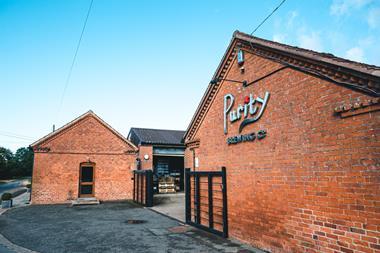



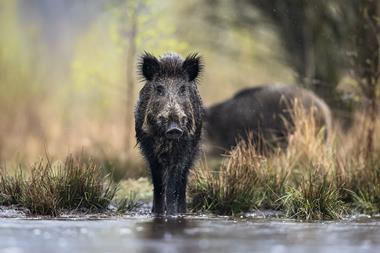
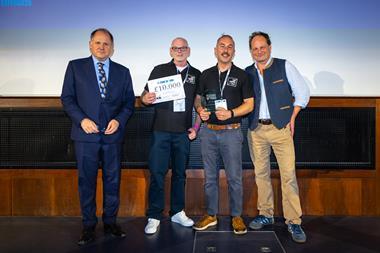
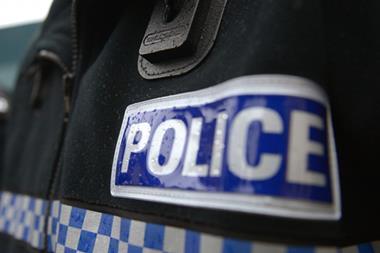
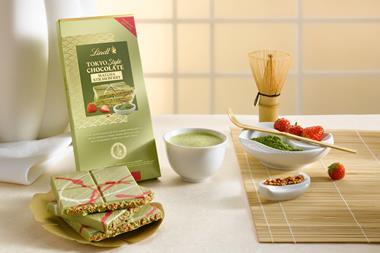


1 Readers' comment